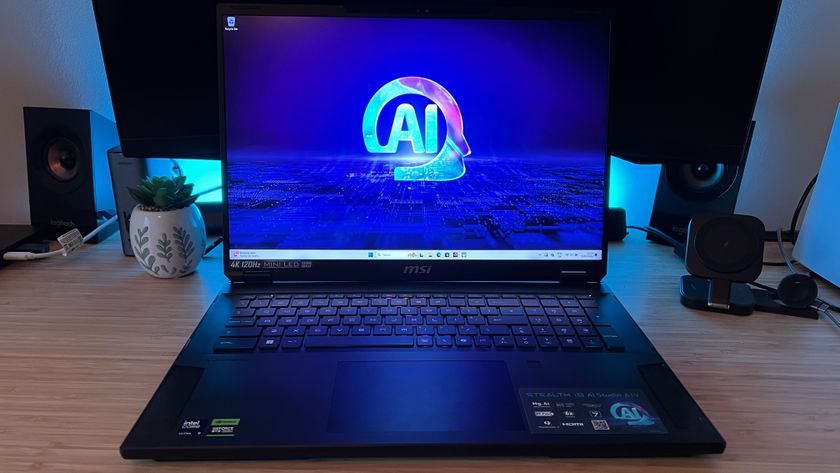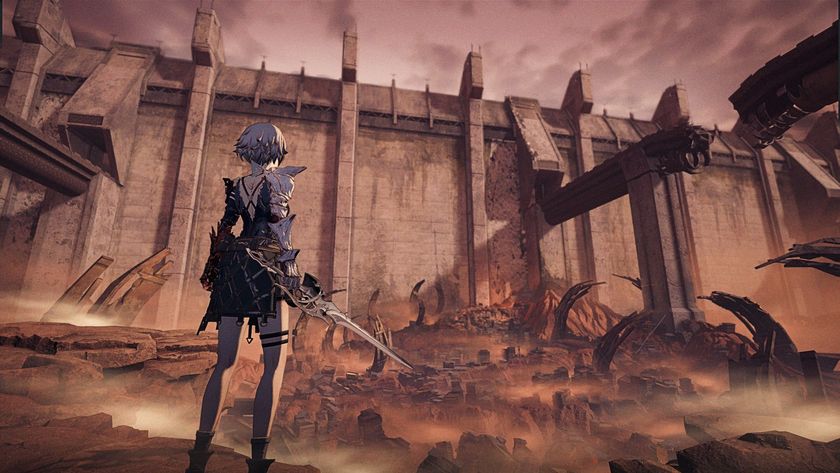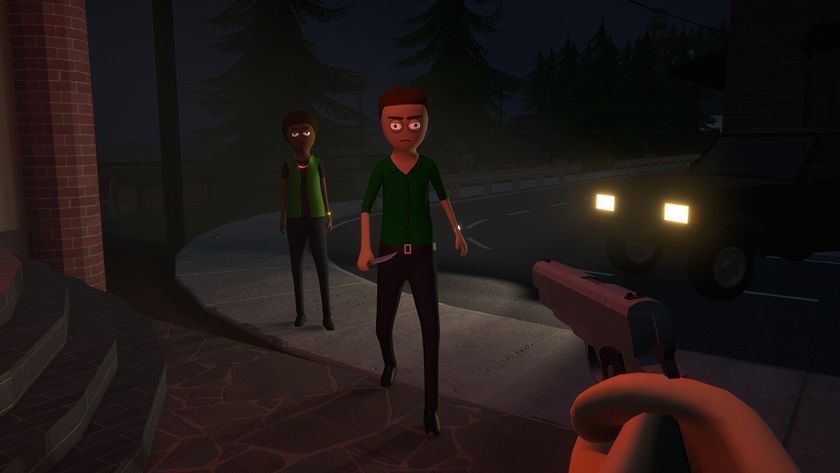12DOVE Verdict
The Asus ROG Zephyrus G16 is a dream for any content creators after a game-ready laptop. The gorgeous OLED display and slick professional form factor are certainly the heavy hitters here, though you're still getting solid performance from the latest components as well.
Pros
- +
Incredible OLED display
- +
Powerful speakers
- +
Slick portable chassis
- +
Solid performance for form factor
Cons
- -
Reduced power components
- -
High price point for performance
Why you can trust 12DOVE
The Asus ROG Zephyrus G16 follows in the footsteps of the G14 model I reviewed earlier in the month, and those footsteps are svelt. As is tradition, this is pretty much a stretched out version of the G14 but whereas Asus scrapped higher end components in its compact machine this year, the G16 can boost all the way up to an Intel Core Ultra 9 185H and RTX 4090 GPU.
This is the do-it-all machine, offering the graphical pieces to a gamer's puzzle while maintaining a super slimline luxury chassis for the creators out there. Of course, that all comes with a lofty price tag - but if you don't want to sacrifice either function or form there are very few gaming laptops out there offering this all-in-one package.
I spent two weeks with the 2024 Asus ROG Zephyrus G16 to see just where it sits among the best gaming laptops on the market right now.
| Specs | Tested | Also Available |
|---|---|---|
| Price | $3,299 | Row 0 - Cell 2 |
| Display | 16-inch ROG Nebula OLED, 2560 x 1600 at 240Hz | 16-inch ROG Nebula IPS, 2560 x 1600 at 240Hz |
| Processor | Intel Core Ultra 9 185H | Intel Core Ultra 7 155H |
| GPU | Nvidia RTX 4090 | RTX 4050 | RTX 4060 | RTX 4070 | RTX 4080 |
| RAM | 32GB LPDDR5X 7467 RAM | 16GB LPDDR5X 7467 RAM |
| Storage | 2TB PCle 4.0 NVMe M.2 SSD | - |
| Connectivity | WiFi 6E, Bluetooth 5.3 | - |
| Ports | 1x HDMI 2.1, 2x USB 3.2 Gen 2 Type-A, 1x USB 3.2 Gen 2 Type-C (DisplayPort and power delivery), 1x Thunderbolt 4, 1x SD card reader, 1x 3.5mm audio | - |
| Dimensions | 35.4 x 24.6 x 1.74cm | 35.4 x 24.6 x 1.64cm |
| Weight | 1.95kg | 1.85kg |
Design

MacBook Pro move over, the Asus ROG Zephyrus G16 is takes the form of a high-end CNC milled aluminum chassis with soft rounded corners and a super subtle design. As with the 2024 Asus ROG Zephyrus G14 model, the LED matrix design atop of the lid is now a thing of the past, and I personally couldn't be happier. These extra animations added to the size and weight of the whole machine and I never found them particularly exciting in the first place, so I'm glad to see a single strip of silver adoring this lid.
This is a glossy panel with a selection of 28 fully customizable RGB mini LEDs. It's a simple nod to the G16's gaming roots, while still presenting a slick creator-style aesthetic when either set to white or switched off. In full color mode, these lights can be distracting, but I did find myself enjoying the effect they cast on their surroundings during gameplay.

The G16 is available in either a darker or lighter gray color, with my review unit being the brighter of the two. The light gray used here is pretty much a pinpoint match with Apple's original MacBooks, and gives everything a particularly professional finish.
The actual construction is rock solid, too. There's no flexing the main deck no matter how hard I pushed and the soft touch material is resistant to fingerprints and smudges - though it remains to be seen how it will fare against everyday use in the scratch department. The display can be easily lifted with one hand, though with some wobble to the main hinge. That's nothing to worry about, and there's certainly no creaking or snapping in this action, but considering the angle of the display has been restricted to 135 degrees, it's an overall minor downgrade from previous versions.
Features
The 2024 Asus ROG Zephyrus G16 is more of an iterative upgrade under the hood. You're still getting the full scope of RTX 4050 - RTX 4090 graphics card options in here, with a minor bump up to the Intel Core Ultra 9 185H processor (or the Core Ultra 7 155H in smaller configurations). These are the latest and greatest components on the market, though, and fitting those top-end pieces into this particularly skinny form factor is an incredible achievement. Of course, these mid-range versions aren't going to act the same in here as full turbo models would in a larger rig (as we'll see further down), but with a max TGP of 125W in the RTX 4090 you're still getting some decent power for the form factor.
Plus, you might not be able to get that OLED display panel in thicker models. And this screen absolutely sings. Developed alongside Samsung, the 240Hz G-Sync panel is the first of its kind, pairing ROG's Nebula HDR with super crisp visuals and fantastic color dynamics for a sublime experience overall. I was impressed with the OLED display on the 14-incher, but in this larger form factor it's more immersive than ever - across both movies and games.

This is by no means the brightest screen I've dealt with - but it was still more than enough for inside use and the odd train journey. The real devil is in the detail here, though, with color contrast to make your eyes bleed and a bouncy vividity that pushed Palworld to its limits.
Atop that screen you're also getting a 1080p webcam (goodbye recurring 720p nightmares) for super crisp video calls as well as IR facial recognition and tracking. Below, you'll find a crisp white keyboard with everything you need (barring a number pad). This is a taller keyboard than the chiclet style you'll find in most luxury ultrabooks, with a 1.7mm travel distance to each key and satisfying level of resistance to each press. Everything is nicely sized and spaced - apart from the arrow keys. Like with the G14 these are shorter stub keys and while they're separated from the main deck for better accuracy they're still harder to hit reliably during everyday play. It wasn't a massive issue for me in my testing, especially once the muscle memory kicked in - but if you rely on these keys for quick-time combos things might get messy.

Just beneath that keyboard sits a behemoth of a trackpad. This takes up the space of everything from the Alt to the CTRL keys, and stretches the full length of the base down to the bottom lip. It's a massive work surface and made for excellent precision movement during productivity tasks. I can't see many players dropping their gaming mouse, but if you're after a hybrid device this super smooth glider is definitely a selling point.
All your standard ports are present and accounted for, though the G16 doesn't go the extra mile with an Ethernet which is a little disappointing in this form factor and at this price point. The left side features Thunderbolt 4-enabled USB-C, one USB 3.2 Gen 1 Type-A, the HDMI 2.1, 3.5mm audio out, and the squared off power port. Meanwhile, the right treats us to a USB 3.2 Gen 2 Type-C port with full Display Port and power delivery, as well as another USB-A and the large SD card reader. The placement of these ports means you bank your accessories on either side of the machine as your setup requires.

The configuration you choose will determine which cooling features you receive. The RTX 4090 model I reviewed comes with a full vapor chamber cooling system backed up by two fans, whereas less power intensive models ship with simple heat pipes and a three-fan array.
Finally, we come to the speaker system - an area I didn't expect to be as invested in. I'll generally throw on a gaming headset for testing (pushing those components to their limits means a lot of fan noise), but I was blown away when I loaded up Spider-Man No Way Home one evening. Sound is incredibly powerful here - with far more bass than I've come to expect from slimline machines. While things can get a little clustered at the lower end of the mid-range (that bass often overpowering more nuanced soundscapes) this is certainly an impressive system.
Performance
Time Spy: 14,863
Fire Strike: 30,285
Cinebench R24: Single; 109 | Multi; 1,076
PC Mark 10: 7,330
The 2024 Asus ROG Zephyrus G16 isn't as invested in pure gaming performance as some of its contemporaries. Instead, this is a machine designed to take you through a full work day and then power up for some gaming in the evening. While you'll still find those high-end components under the hood, the numbers aren't as high as you'll find in alternative models with different aspirations.

Overall, the performance certainly isn't anything to be sniffed at. There aren't many gaming laptops measuring just 1.7cm thick and still scoring over 30,000 points in Fire Strike. Even the chunkier Lenovo Legion Pro 7i tapped out at just under that position with an i9-13900HX processor and RTX 4090 at the helm. Still, with its reduced power the G16 couldn't quite keep up with the likes of the giant Asus ROG Zephyrus Duo 16 across both Time Spy and Fire Strike. While last year's larger Asus ROG Zephyrus M16 did fall a couple of hundred points behind the G16 in Time Spy, it stretched out well ahead in Fire Strike. That's still impressive for the newer model - the M16 is running a much higher powered graphics card in a slightly thicker chassis after all.
| Benchmark | FHD | QHD+ |
| Shadow of the Tomb Raider | High: 167fps | Highest: 165fps | High: 154fps | Highest 148fps |
| Total War: Three Kingdoms | High: 164fps | Ultra: 128fps | High: 109fps | Ultra: 81fps |
| Returnal | High: 127fps | Epic: 118fps | High: 127fps | Epic: 117fps |
| Hitman 3 | High: 125fps | Ultra: 124fps | High: 116fps | Ultra: 115fps |
In-game benchmarks show that the G16 can still handle pretty much anything you throw at it at above 100fps in 1080p and can hold steady at 60fps+ in QHD+. I'm comparing in-game performance across a range of different Asus gaming laptops from the last year here, all of which were tested in Turbo settings. It's worth noting, though, that the Lenovo Legion Pro 7i - used here as an example of a chunkier machine running similar specs - was benchmarked on a Balanced power preset.




In-game the G16 managed to stay on level with last year's counterparts despite its smaller form factor - outperforming the thicker but smaller 2023 Asus ROG Zephyrus G14 and the M16 to boot. Shadow of the Tomb Raider's numbers couldn't quite keep up with the extra power afforded to the Lenovo Legion Pro or the Zephyrus Duo, but still were still consistently above 120fps in both 1080p and QHD.
Total War: Three Kingdoms presents a bit more of a challenge, especially in QHD+ resolutions. However, the G16 still managed to stay above water, only ever dipping below 100fps with everything pushed up to 11. The slimline chassis does make itself known here, though. The Lenovo Legion Pro 7i managed to beat the G16's 1080p scores without even cranking up its power profile in previous tests, and kept pace in QHD+ as well.
Returnal and Hitman 3 are more demanding benchmarks with heavier lighting and texture sequences. We're looking to the Legion and the G14 for comparative benchmarks here - and there aren't too many surprises. Results are pretty even, with both older devices pulling ahead slightly. The reduced power of the G16's components is clear, but the resulting framerates can't be snubbed at over 100fps.
Should you buy the Asus ROG Zephyrus G16?

The Asus ROG Zephyrus G16 is perfect for those looking to invest in a creator / gaming laptop to see them through a multimedia work day and into an evening of high-end gaming. Its power isn't going to top the charts, but whether or not you really need 200fps+ style framerates is up for debate (I'd take the OLED display, slimline form factor, and excellent speakers with 100fps play any day).
The Lenovo Legion Pro 7i does have performance on its side, but at the sacrifice of that portable form factor and certainly the OLED panel. While last year's G14 can beat the G16 in terms of sheer size while keeping up with its performance, it drops the more sophisticated look and feel of the newer model (and did I mention that OLED screen?).
Of course, this isn't going to be the best pick if you're going all in on gaming. Those after a rig designed to stay firmly on a desk will see much better returns in a chunkier 16-inch machine or an 18-inch powerhouse like the Alienware M18 or 2024 Asus ROG Strix Scar 18.
How we tested the Asus ROG Zephyrus G16
I used the Asus ROG Zephyrus G16 for two weeks, with one week spent solely working and playing on the device and another spent testing alongside the Acer Nitro 16 and Acer Nitro 5. I primarily played Palworld, Assassin's Creed Odyssey, and Apex Legends during this time, while stress testing across Shadow of the Tomb Raider, Total War: Three Kingdoms, Returnal and Hitman 3. For more information on how we test gaming laptops, check out the full 12DOVE Hardware Policy.
We're also rounding up all the best Razer laptops and the best Alienware gaming laptops on the market. Or, for something a little cheaper, check out the latest cheap gaming laptop deals available.

Managing Editor of Hardware at 12DOVE, I originally landed in hardware at our sister site TechRadar before moving over to GamesRadar. In between, I've written for Tom’s Guide, Wireframe, The Indie Game Website and That Video Game Blog, covering everything from the PS5 launch to the Apple Pencil. Now, i'm focused on Nintendo Switch, gaming laptops (and the keyboards, headsets and mice that come with them), PS5, and trying to find the perfect projector.



















"AI is not as effective as it might appear": Dev of AI-focused Soulslike RPG says they didn't use any AI-generated content and it can't match "genuine creativity"

Sue Storm and Namor are officially both in Avengers: Doomsday, and fans are wondering if Reed Richards has something to worry about

The First Berserker: Khazan isn't even out yet, but the new Soulslike RPG already has over 1,300 94% positive reviews on Steam from early buyers




